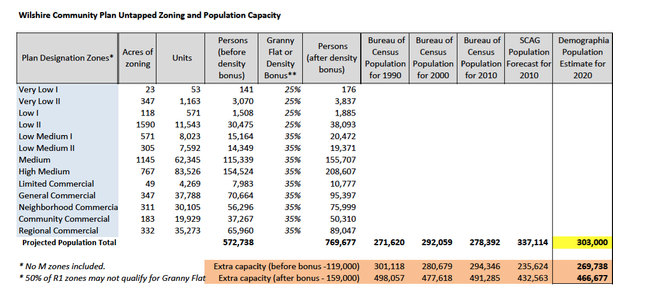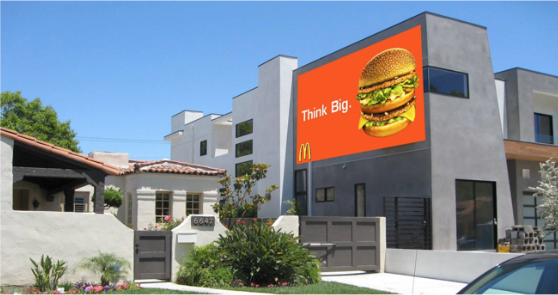CommentsPLANNING WATCH-In a recent 2019 CityWatch column and in previous 2016 columns I carefully debunked City Hall’s Purple Line Extension Transit Neighborhood Plan (TNP).
I explained how this proposal was a real estate scam masquerading as an essential mass transit component. But, in Los Angeles, even with cascading FBI investigations, United States Attorney indictments, guilty pleas, and prison terms for City Hall officials pitching illicit real estate proposals, Purple Line TNP real estate boondoggles are still rolling out from the trickle down dead-enders.
The latest proposal comes from an anonymous and misnamed Facebook group, Friends of the Purple Line (FOPL), sponsored by YIMBY California, a pro-development lobbying organization heavily funded by Silicon Valley tycoons. Their proposal massively up-zones a 10-mile square area, including every residential lot in the Beverly-Fairfax, Melrose, Miracle Mile, Carthay, Pico, and Hancock Park, and Larchmont neighborhoods. It targets every community between Rossmore/Vine on the east, Beverly Hills on the west, West Hollywood on the north, and Pico Boulevard on the south. The FOPL proposal transforms them all -- including six (and possibly nine) Historical Preservation Overlay Zones (HPOZs) -- into apartment districts. It also abolishes the Beverly Grove anti-mansionization Residential Floor Area District and seven anti-mansionization R1 variation zones (North Beverly Grove, Fairfax, LaBrea-Hancock, Sycamore Square, Larchmont Heights, Picfair Village, and Wilshire Vista). The justification for this generous and untaxed gift to real estate speculators is that upzoning triggers additional residential construction, and the residents of these buildings will fill otherwise empty Purple Line subway cars.
I have encountered many knuckleheaded proposals in my decades as a city planner, but this one takes the cake. Stifling my initial reaction is to laugh it off as nonsense, let me call out a dozen fundamental errors that totally undermine this proposal.
Error 1. The FOPL proposal is not based on an analysis of existing zoning capacity. The Purple Line area could easily double its population without any zone changes, to jump from about 60,000 to 120,000 people. The existing commercial zoning on LaBrea Avenue, Fairfax Avenue, LaCienega Avenue, and San Vicente Boulevard already allows large, by-right R4 apartments, all of which qualify for SB 1818 and TOC Guidelines density bonuses. Furthermore, Wilshire Boulevard’s zoning is similar to Century City’s. Existing Miracle Mile plan designations and zoning allows it to become a long corridor of R4 high-rise residential buildings, without restrictions on building height and number of stories.
Error 2. The FOPL proposal is not based on data documenting population growth in this area or the entire Wilshire Community Plan area. If the FOPL had examined at these data, they would have discovered a pre-Pandemic 2020 population estimate for the entire Wilshire Community Plan area of 303,000. This is 34,000 individuals less than the 337,000 people than LA City Planning forecast for the year 2010. The Wilshire Community Plan’s zoning build out population is 573,000 people. Then, if density bonuses and Accessory Dwelling Units (Granny Flats) were added to the mix, the area’s population would soar to 769,000. None of this enormous population growth requires changes to existing zoning, whether proposed by Friends of the Purple Line or the Department of City Planning.

Error 3. The area's municipal services and infrastructure are already maxed out and frequently fail. Electrical blackouts, water main breaks, broken sidewalks, missing street trees, and pot-holed streets are widespread. Without major upgrades to these and other infrastructure categories, the area’s support systems would collapse if the FOPL’s proposed upzoning resulted in more people and buildings.
Error 4. The Pandemic and its associated deep economic recession have already increased residential and commercial vacancy rates. Nearly every local commercial and apartment block has an outbreak of For Rent signs. As a result, the FOPL plan area already has a glut of unrented apartments. Within several months the plight of under-water tenants and homeowners will reach the breaking point. This is why foreclosures, evictions, and homelessness will soar in Los Angeles, especially in the older neighborhoods the FOPL intends to densify.
Error 5. There is already a large stock of unsold homes in this plan area, including 46 empty McMansions between Wilshire Boulevard and West Hollywood. Even if the proposed Purple Line plan upzoning resulted in more construction activity, which is highly unlikely, few Angelinos could afford to rent new, over-priced apartments, buy condos costing $450,000 to $850,000, or fork over $3-5 million for a boxy, shoddily-built McMansion.

Beverly Grove McMansion. 46 more are waiting for buyers.
Error 6. The FOPL plan consists of massive up-zoning, and upzoning increases property value. It results in enormous windfall profits for property owners. These increased property values, however, also require expensive rents in order for developers to make a competitive profit. The chance that landlords will drop rents so they can fill vacant units with poor people is nil.
Furthermore, the well-off tenants who could afford the expensive rents of new Purple Line area town houses and apartments also own and drive cars. Even when the live close to bus stops and subway stations, they rarely use mass transit. The FOPL claim that living close to mass transit magically turns car owners into transit users is totally wrong. This is demonstrated by such LA neighborhoods as Hollywood, Koreatown, and DTLA. When new expensive apartments sprouted there, transit ridership plummeted on the adjacent Red and Purple subway lines. Frequent, low-income transit riders were displaced to make way for expensive, in-fill apartments. Once new affluent tenants moved into the area, they continued to shun buses and subways.
Error 7. In Los Angeles, no city employees ever verify pledged low-priced density bonus housing. Even if landlords get a density bonus, there is nothing to stop them from renting these units out at market rates. A toaster oven, free parking for six months, or several months of waived rent still leave rental apartments far beyond the reach of most prospective tenants.
Error 8. Neither LA City nor METRO have planned or funded any First-Last Mile in the FOPL plan area, and the FOPL plan has no funding mechanisms for these upgrades. Unless or until this changes, there will be no new sidewalk and intersection repairs; no station parking facilities; no station interfaces for cars, scooters, bikes, or pedestrians; no bus shelters; no street trees; no street furniture; no fare reductions, and no requirements for landlords to provide tenants and employees METRO TAP cards.
Error 9. The FOPL’s proposed massive upzoning of the Miracle Mile area conflicts with the Miracle Mile Community Design Overlay District. It states, “Proper site planning should promote harmony between new and existing buildings and should be sensitive to the scale, form, height, and proportion of surrounding development. . .”
Error 10. The extensive upzoning of the entire area, up to one mile from subway stations at LaBrea, Fairfax, and LaCienega, would conflict with the City Council-adopted Wilshire Community Plan. It’s policy 1-3.1 states, “Promote architectural compatibility and landscaping for new Multiple Family residential development to protect the character and scale of existing residential neighborhoods.”
Error 11. Any proposal to comprehensively upzone this entire area would also conflict with General Plan Framework Element, the unifying element of LA’s General Plan. For example, the Framework’s Objective 3.3 states, “Accommodate projected population and employment growth within the City and each community plan area, and plan for the provision of adequate supporting transportation and utility infrastructure and public services.” This means that the City of LA cannot expand an area’s population through up-zoning until it demonstrates that adequate public services and infrastructure are in place for the additional residents and employees.
Similarly, the Framework’s Objective 3.5 states, “Ensure that the character and scale of stable single-family residential neighborhoods is maintained, allowing for infill development provided that it is compatible with and maintains the scale and character of existing development.” Since the Friends of the Purple Line proposal would totally change the character and scale of single-family residential neighborhoods from the Beverly Hills boundary to Hancock Park by allowing by-right apartment buildings, the FOPL proposal totally also conflicts with this adopted planning policy.
Error 12. Local communities are united in their opposition to City Planning’s TNP up-zoning proposal, including the likelihood that the forthcoming update of the Wilshire Community Plan would exclude up-zoned neighborhoods. Therefore, local opposition to the more extreme FOPL proposal would be even more intense. After all, it up-zones 10 square miles of established neighborhoods, while abolishing up to 9 Historical Preservation Overlay Zones, seven anti-mansionization R1 variation zones, and one Floor Area Ratio District.
Conclusion. In the remote chance that widespread up-zoning in the mid-city neighborhoods would result in new housing, there is no chance that the new residents will board the area’s buses and in 2023, the Purple Line subway. They owned and drove cars in the past, and their habits will persist, even when mass transit is nearby.
Of course, if transit were free, that could make a difference. Plus, downzoning would force developers to apply for density bonuses. If these requirements were increased and rigorously enforced, the number of local transit users would certainly grow. The likelihood that Friends of the Purple Line or their real estate industry puppeteers would ever take this approach is nil, no different than expecting landlords to voluntarily slash their rents so homeless people can put a roof over their head.
(Dick Platkin is a former Los Angeles city planner who reports on local planning issues for CityWatch. He serves on the board of United Neighborhoods for Los Angeles (UN4LA) and is co-chair of the new Greater Fairfax Residents Association (GFRA). Please email comments and corrections to [email protected] or via Twitter to @DickPlatkin.)

















